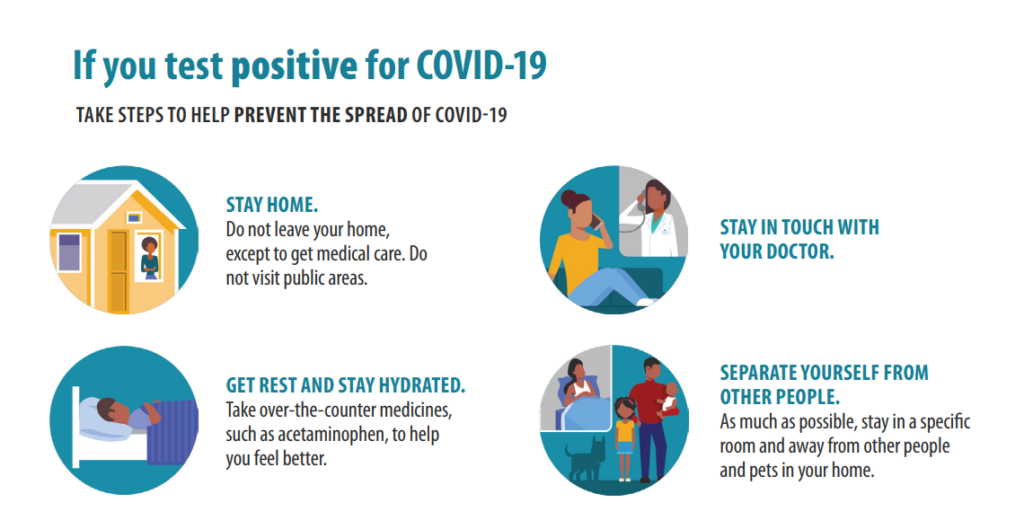Based on CDC,
- Stay home when you are sick, except to get medical care.
- Use a separate room and bathroom for sick household members (if possible).
- Wash your hands often with soap and water for at least 20 seconds, especially after blowing your nose, coughing, or sneezing; going to the bathroom; and before eating or preparing food.
- If soap and water are not readily available, use an alcohol-based hand sanitizer with at least 60% alcohol. Always wash hands with soap and water if hands are visibly dirty.
- Provide your sick household member with clean disposable facemasks to wear at home, if available, to help prevent spreading COVID-19 to others.
- Clean the sick room and bathroom, as needed, to avoid unnecessary contact with the sick person.
If some people may need emergency medical attention with these signs,
Call 911 or call ahead to your local emergency facility.
- Trouble breathing
- Persistent pain or pressure in the chest
- New confusion
- Inability to wake or stay awake
- Bluish lips or face








